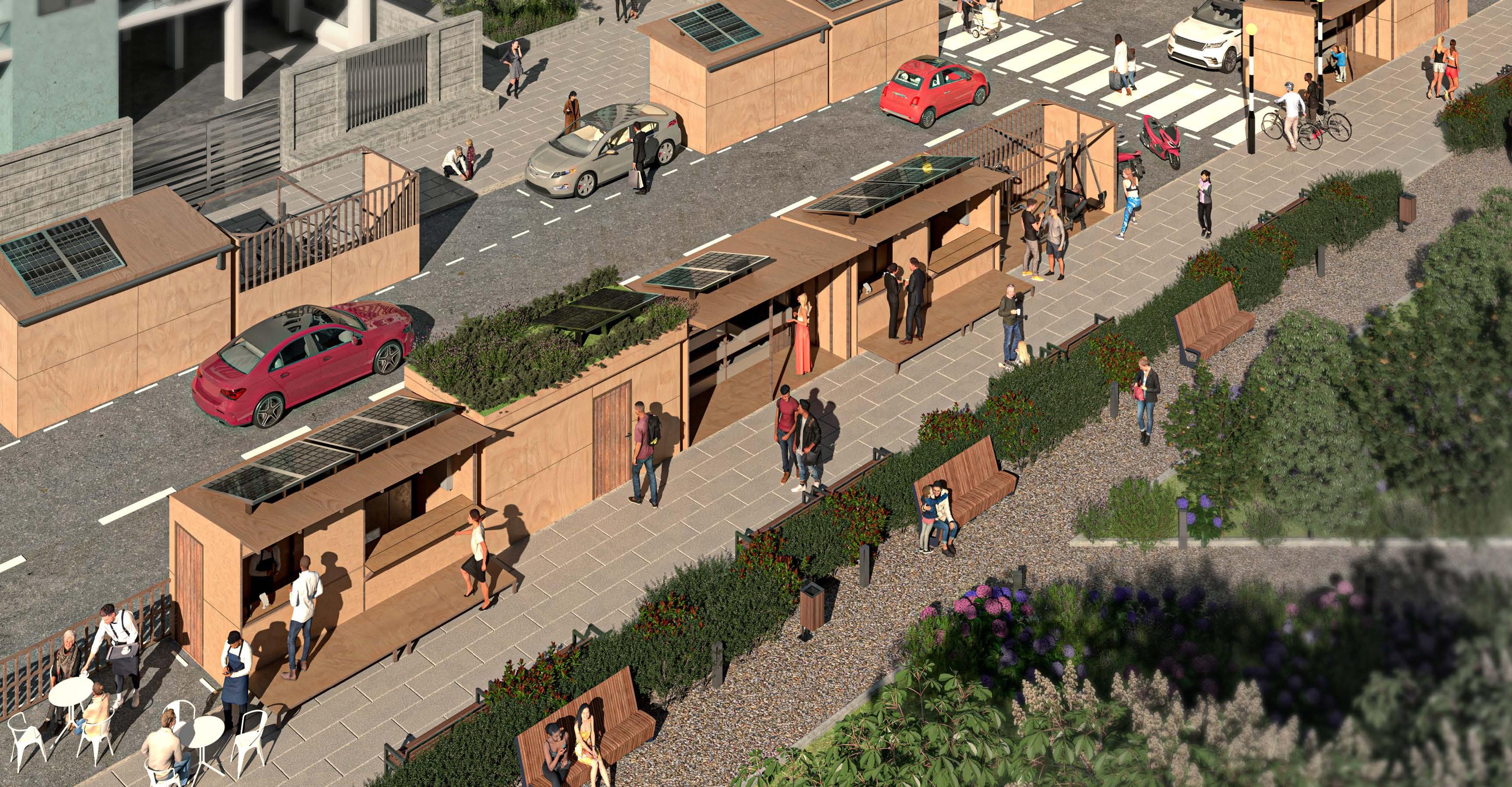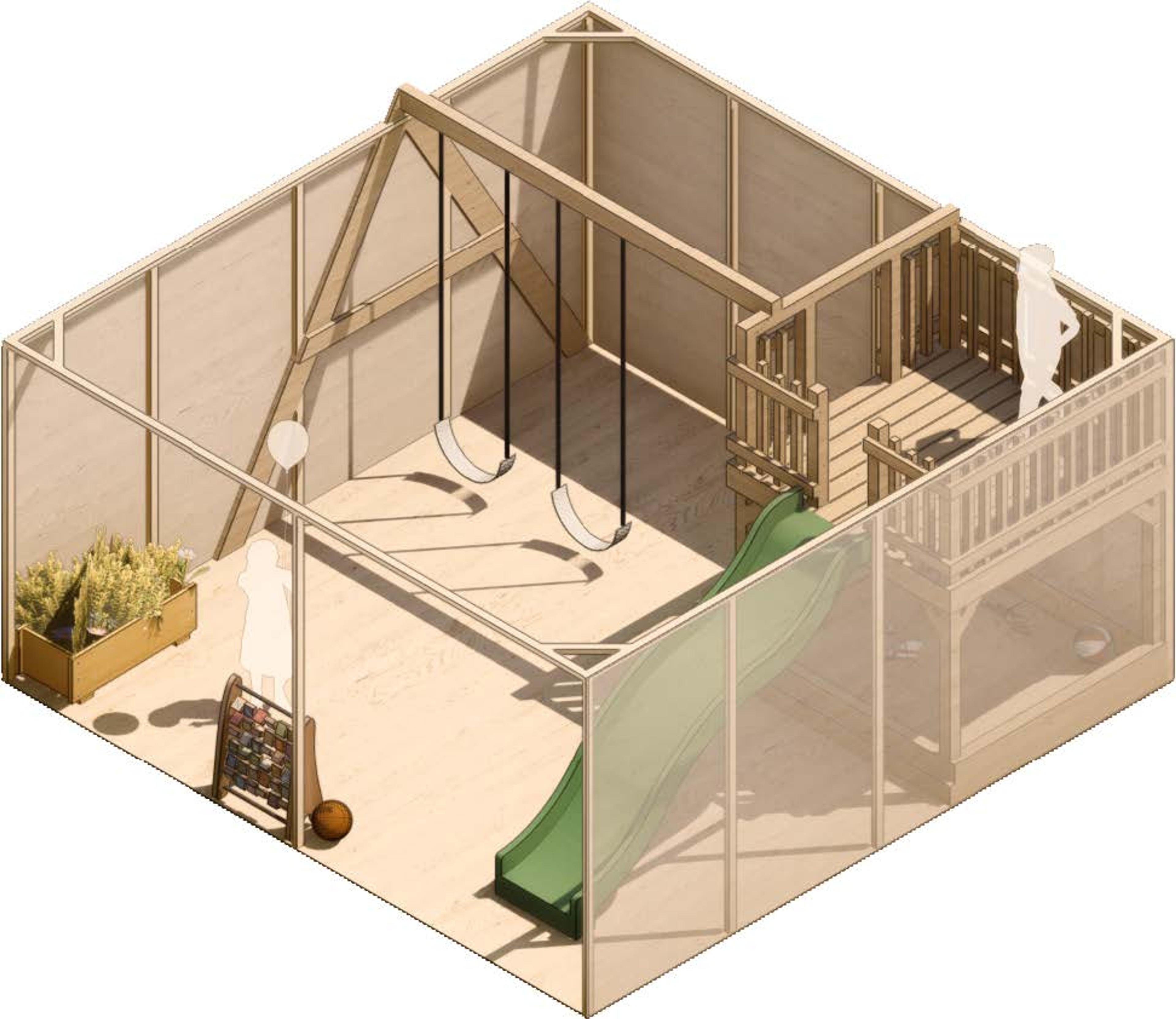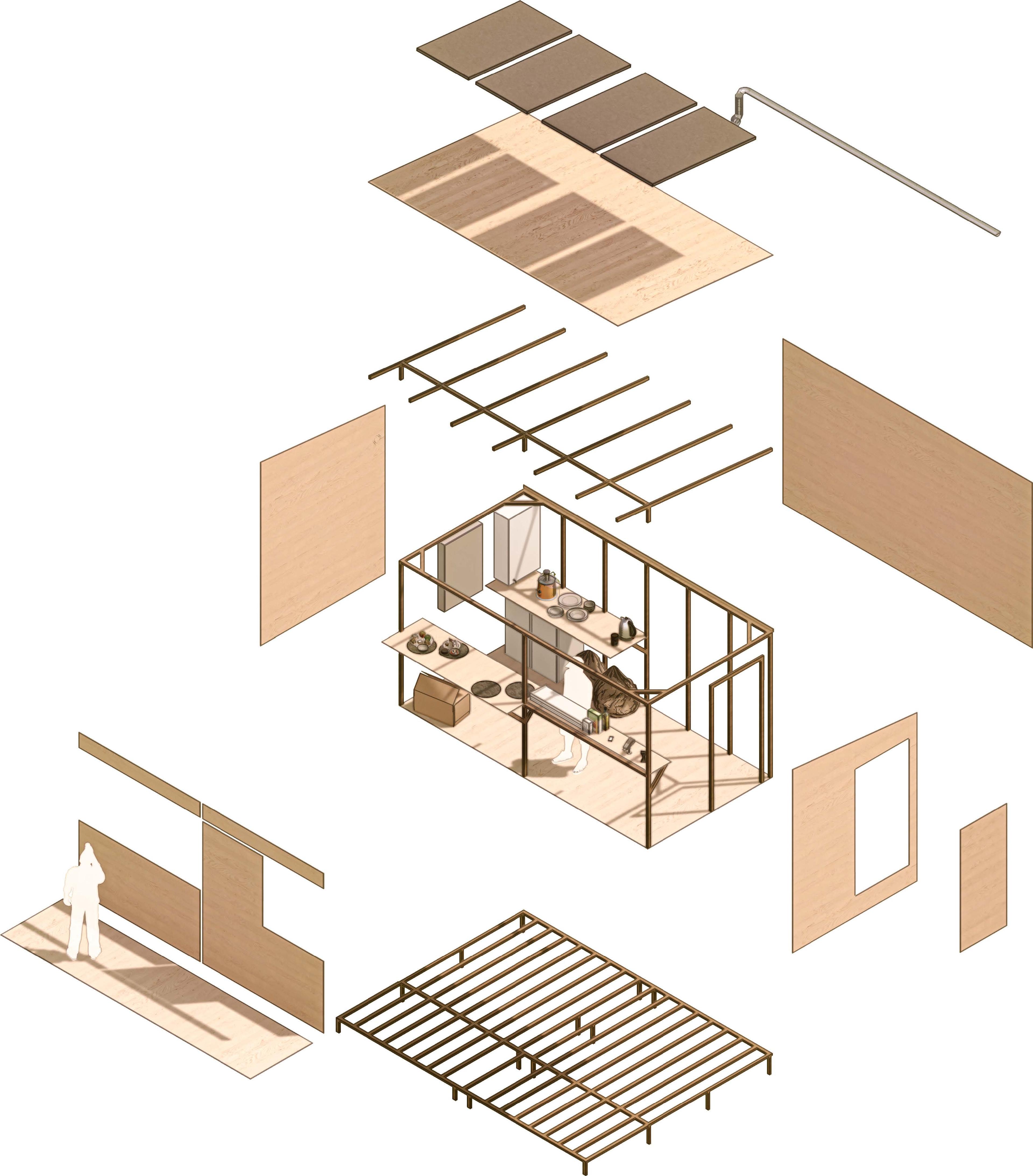Pavement
University of Portsmouth
Corey Matthews-Turner, Daniel Brown, Huw Jones, Jacob Whatley
We propose system of modular, simple-to-build, versatile and re-usable units to be placed on parking spaces adjoining the pavement, made of off-the-shelf materials and designed to rejuvenate pavements from thoroughfares to places to be. By 2030 we expect there to be much reduced private car use, and consequently reduced need for parking spaces adjacent to pavements. Making this space vibrant, productive, engaging, and community-led will help rejuvenate pavements that, until now, have just been a thoroughfare. We’re making pavements a place to be.
At the heart of the proposal is a website where users can configure their modules, selecting from different roofs, wall types, floor types, etc. Once users have put together their desired module(s), the website generates a materials list and instructions sheet, who can then download these as PDFs and begin constructing. All modules are designed carefully to use off-the-shelf materials, and full-size building blocks – such as full sheets of plywood – to reduce wastage and aid in quicker & easier construction.
Users can optionally purchase specially designed corner pieces, made out of recycled metal to make construction even easier & faster. These corner pieces will also be available to 3D print for free, suggesting printing in tough & UV safe materials like ABS plastic. Sale of the metal corner pieces generates income to help keep running the website.
Users can re-upload their designs to the community gallery, making it an open source and crowd-sourced system. All modules feature services running through and connecting at predefined points, allowing for easy & quick connection of essential utilities.
An envisaged use case: local authorities fund projects to rejuvenate dead streets, paying for materials and delivery and granting necessary permits & insurance. A community group self-organises to select, design and build their own units along the pavement. The community group and local authority work together to monitor the intervention; if changes are needed, modifying units is easy as all designs work on the same basic building blocks, and are constructed using nuts & bolts, rather than nails, to enable effective disassembly. All elements are designed to be reusable and recyclable.
Benefits include: community engagement in need & design; construction by the community develops ownership; fostering entrepreneurship with super-low rent micro-premises; providing play spaces; providing homeless shelters; enabling growing fresh food; increasing green space along the pavement, reusability, versatility endless variations of design, crowd-sourced designs leading to novel and community-led ideas, and much more.


